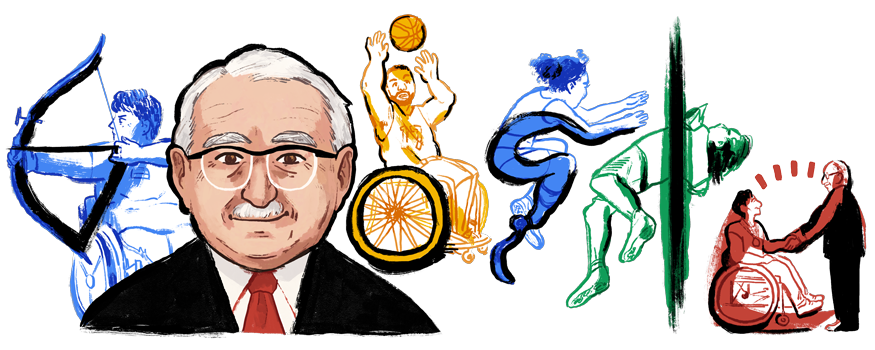Neurologist celebrated with Google Doodle
 Neurologist Professor Sir Ludwig Guttmann has been featured as a ‘Google Doodle’ in recognition of his work founding the Paralympic movement.
Neurologist Professor Sir Ludwig Guttmann has been featured as a ‘Google Doodle’ in recognition of his work founding the Paralympic movement.
The German-born doctor did groundbreaking research work on spinal cord injuries in the 1930s, but had to flee Hitler’s Nazi regime as a refugee to Britain in 1939. He continued his research and clinical practice in paraplegia in the UK where he became director of the National Spinal Injuries Centre at Stoke Mandeville Hospital. There he organised the first “Olympics for the Disabled,” which went on to become the Paralympic Games.
Potential marker for ALS muscle wasting and treatment response
Queensland researchers have shown that venous creatinine may be a useful biomarker to monitor loss of fatfree mass – and response to therapy – in patients with amyotrophic lateral sclerosis (ALS).
In a study involving 107 patients with ALS they monitored patterns of venous creatinine over time and compared them to those of a control groups of 52 healthy controls.
They found that over time there was a correlation between fat-free mass and venous creatinine in patients and the control group. A decline in venous creatinine was observed in patients corresponding to loss of fat-free mass over the course of disease, is consistent with neurogenic wasting of muscle. Their study, published in European Journal of Neurology, also showed that lower levels of creatinine in patients with ALS were also associated with shorter survival.
Monitoring of venous creatinine could therefore “inform clinical care and provide an alternative endpoint for the evaluation of therapeutic interventions that focus on slowing the loss of fat-free mass and disease progression in ALS,” they concluded.
Gender disparity in citations a career barrier for female academics in medicine
Women face an additional barrier to advancement in academic medicine because their articles published in medical journals have fewer citations than those written by men, a US study shows
An analysis of 5,554 articles published in 5 high-impact journals showed that, 36% had a female primary author, and 26% had a female senior author.
However, articles with women as primary author were cited a median of 36 times in other journals, compared to 54 citations of articles with male primary authors.
As senior authors, women were cited a median of 37 times, while male counterparts received a median of 51 citations.
The disparity is likely putting female academics at a disadvantage compared to their male peers because the number of citations of peer-reviewed articles is commonly used as a metric for academic recognition, influence, and in professional evaluations and promotion, the study authors said.
“This imbalance will not be solved through hiring and mentoring more women alone,” said senior author, Dr Rachel Werner of the University of Pennsylvania.
“We must also work to ensure that women already in academic medicine are equally valued and promoted for their contributions and their successes. From the journals publishing this work, to academic institutions promoting articles once published, everyone should be invested in bridging this gender divide.”